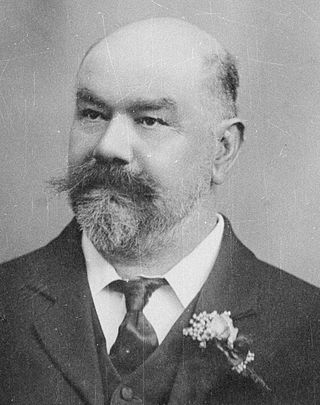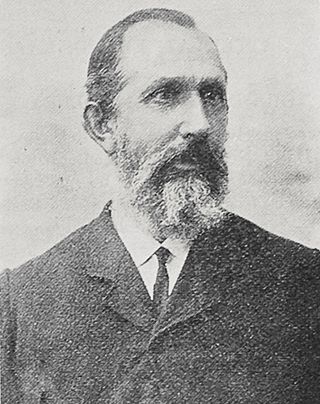
Sir Harry Albert Atkinson served as the tenth premier of New Zealand on four separate occasions in the late 19th century, and was Colonial Treasurer for a total of ten years. He was responsible for guiding the country during a time of economic depression, and was known as a cautious and prudent manager of government finances, though distrusted for some policies such as his 1882 National Insurance (welfare) scheme and leasehold land schemes. He also participated in the formation of voluntary military units to fight in the New Zealand Wars, and was noted for his strong belief in the need for seizure of Māori land.

The 1887 New Zealand general election was held on 26 September to elect 95 MPs to the tenth session of the New Zealand Parliament. The Māori vote was held on 7 September. 175,410 votes were cast. In 5 seats there was only one candidate.

The 1922 New Zealand general election was held on Monday, 6 December in the Māori electorates, and on Tuesday, 7 December in the general electorates to elect a total of 80 MPs to the 21st session of the New Zealand Parliament. A total number of 700,111 (87.7%) voters turned out to vote. In one seat there was only one candidate.

Sir Thomas Mason Wilford was a New Zealand politician. He held the seats of Wellington Suburbs then Hutt continuously for thirty years, from 1899 to 1929. Wilford was leader of the New Zealand Liberal Party, and Leader of the Opposition from 1920 to 1925.

The Tauranga by-election of 1923 was a by-election during the 21st New Zealand Parliament in the Tauranga electorate. The seat became vacant due to the death of the sitting Member, William Herries. The election was held on 28 March 1923 and won by Charles MacMillan, who defeated the former prime minister Joseph Ward.

George Fisher was a four-time Mayor of Wellington, New Zealand from 1882 to 1885, and in 1896. He represented various Wellington electorates in Parliament for a total of 18 years. He was nicknamed ‘Tarcoola George’.

Francis "Frank" Lawry was a conservative then Liberal Party Member of Parliament in New Zealand.

Charles Hayward Izard was a Liberal Party Member of Parliament in New Zealand, and a Wellington lawyer.

The 11th New Zealand Parliament was a term of the Parliament of New Zealand.

The 16th New Zealand Parliament was a term of the New Zealand Parliament. It was elected at the 1905 general election in December of that year.

The Whitaker Ministry was formed in 1882 as the government of New Zealand. It was led by Frederick Whitaker and lasted for 17 months, from 21 April 1882 to 25 September 1883. The Whitaker Ministry succeeded the Hall Ministry upon John Hall's resignation.
The Third Atkinson Ministry was a responsible government in New Zealand, sometimes referred to as part of the Continuous Ministry. It took office after the retirement of Frederick Whitaker and continued the personnel and policies of the Whitaker and Hall ministries.
The First Stout-Vogel Ministry was a responsible government in New Zealand lasting less than a fortnight, not to be confused with the longer-lasting Second Stout-Vogel Ministry. It took office after the Continuous Ministry of Harry Atkinson fell to a confidence motion after the 1884 general election.
The Third Fox Ministry was a responsible government which held power in New Zealand from June 1869 to September 1872. Although William Fox was the head of the government, he was never appointed Premier as that office had yet to be established, although he did resign the office at the end of his tenure. The Ministry was also known as the Fox-Vogel Ministry as most of the agenda was set by the Treasurer, while Fox busied himself with administrative affairs and moral crusades such as the attempted introduction of local option polls for liquor licensing.
The First Vogel Ministry was a responsible government which held power in New Zealand from April 1873 to July 1875.
The Pollen Ministry was a responsible government which held power in New Zealand from July 1875 to February 1876 while Julius Vogel was in London.
The Second Vogel Ministry was a responsible government which held power in New Zealand from February to September 1876.
The First and Second Atkinson Ministries were responsible governments in a period sometimes known as the Continuous Ministry. Harry Atkinson formed a government on 1 September 1876, but as it included 9 salaried ministers rather than the legally mandated 8, the Ministry was forced to resign on 13 September and take office again without John Hall. This second Atkinson ministry survived a full year.
The Hall Ministry was a responsible government in New Zealand, sometimes referred to as part of the Continuous Ministry. It took office after defeating Sir George Grey's supporters in a confidence motion, and is usually regarded as a conservative Ministry, although Hall himself described his followers as "the independent Liberal party".
The Fourth Atkinson Ministry was a responsible government in New Zealand, which lasted less than a week. It formed on 28 August 1884 after the fall of the first attempt at a Stout-Vogel coalition and lasted until Robert Stout and Sir Julius Vogel took back their majority on 3 September.


















